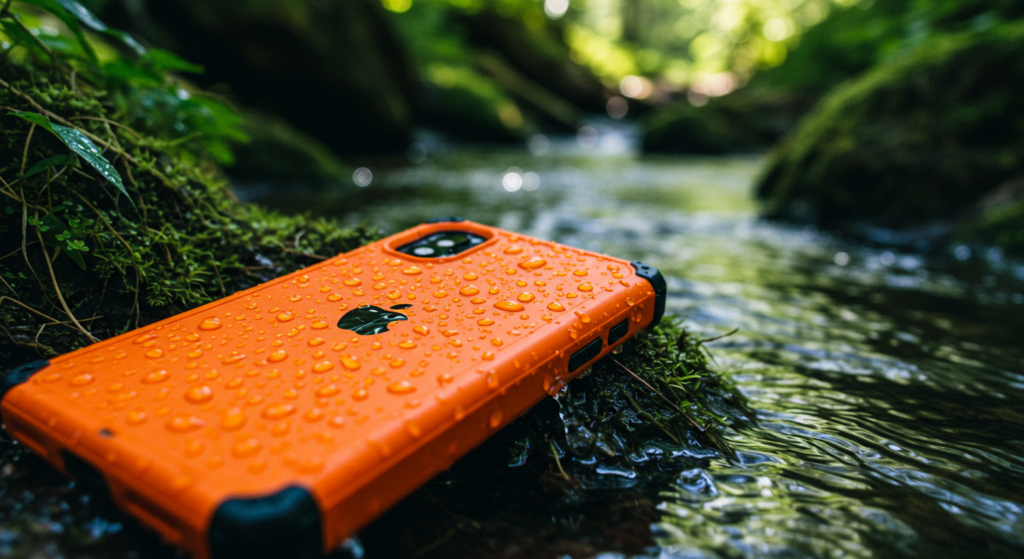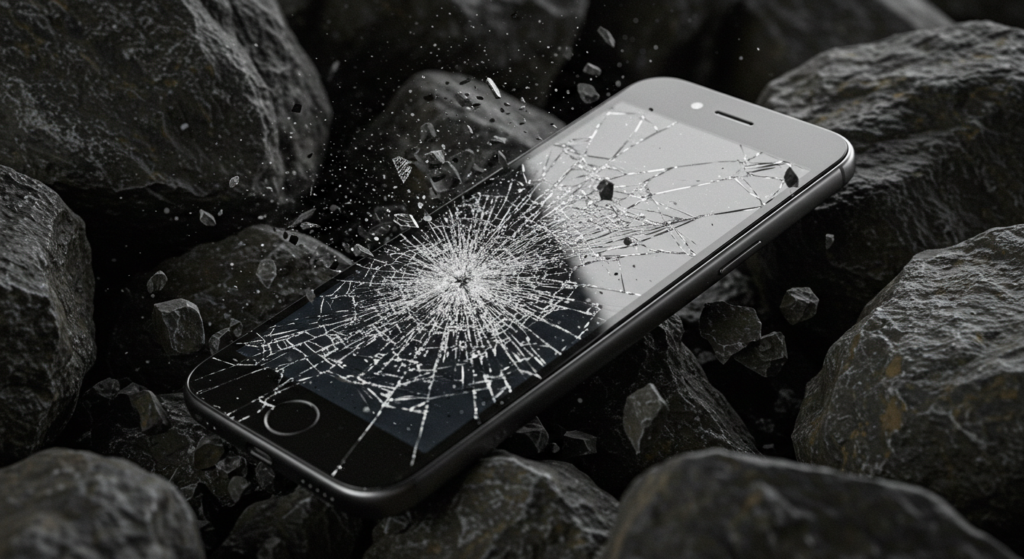How To Upcycle Your Broken Smartphone Into Survival Tools
Whether you’re on a weekend trip to Cades Cove in the Great Smoky Mountains or a weeks-long trek along the Continental Divide Trail, your cell phone has become an essential piece of Everyday Carry (EDC). While it provides navigation, emergency communication, and entertainment, it’s not hard to imagine a scenario where your phone becomes useless, either due to a lack of service or an unfortunate fall down a rocky slope. To ensure you stay connected when you need it most, here are essential tips to keep your phone functional in the wild and how to build survival tools with its parts if things go south.
1. Choose the Right Phone and Accessories

Not all phones are created equal when it comes to outdoor durability. If you frequently explore rugged terrain, consider investing in a rugged smartphone designed for extreme conditions. Brands like CAT, Kyocera, and certain Samsung Galaxy models offer water and shock resistance that can withstand drops, rain, and dust. A durable phone can mean the difference between staying connected or being left without a lifeline in an emergency.
Beyond the phone itself, protective accessories can greatly enhance its resilience. A rugged case from brands like OtterBox, LifeProof, or Pelican provides military-grade protection against impact. A high-quality screen protector, preferably tempered glass, prevents cracks and scratches that can make your phone difficult to use. Pairing these with a waterproof pouch, such as those from Aquapac, ensures your phone remains functional even in wet environments.
Considering these accessories as essential gear rather than optional add-ons can significantly improve your phone’s survival in harsh outdoor conditions. Investing in durable options will protect your phone from drops, water exposure, and dirt, allowing it to remain a reliable survival tool throughout your adventures.
2. Preserve Battery Life
Your phone is only useful if it has power, and in the backcountry, outlets are nonexistent. To extend battery life, enable Low Power Mode to reduce background activity and turn off unnecessary features like Bluetooth and Wi-Fi when not in use. Using Airplane Mode in areas with no signal also prevents constant searching, which drains the battery quickly. Managing these settings can help extend usage time significantly, ensuring your phone is available when needed.
Cold temperatures can quickly sap battery power, especially in freezing environments. Keeping your phone warm by storing it in an insulated pocket close to your body will help prevent rapid battery depletion. If you are hiking in subzero conditions, using a small hand warmer near your phone can keep it at an optimal temperature. Avoid leaving it exposed to the elements, as extreme cold can cause it to shut down entirely.
Carrying a high-capacity power bank, such as Anker’s 20,000mAh models, provides a reliable backup power source. While solar chargers can be a good supplementary option, they require strong sunlight and patience to charge effectively. Bringing multiple power sources ensures that you have a way to recharge even during multi-day trips.
3. Ensure Connectivity in Remote Areas
Cell service can be spotty in the wild, but there are ways to improve your chances of staying connected. Checking coverage maps before your trip helps you understand where you might find service. Carriers often have different coverage zones, so knowing these areas can help you plan communication breaks accordingly.
Downloading offline maps using apps like Gaia GPS, AllTrails, and Google Maps ensures you have navigation tools even when there’s no service. A good practice is to mark key points, such as water sources and campsites, before heading out. Keeping a digital map available can prevent you from getting lost in unfamiliar terrain.
For areas with weak signals, a signal booster like the weBoost Drive Reach can enhance connectivity, though it typically requires a vehicle. For complete peace of mind, a satellite communicator like Garmin inReach or SPOT allows for emergency messaging and GPS tracking in remote areas. These survival tools provide an essential lifeline when traditional cellular networks are unavailable.
4. Protect Your Phone from the Elements

The great outdoors can be harsh on electronics, so taking precautions to shield your phone from environmental hazards is crucial. Keeping it dry is a priority, use waterproof bags or cases to prevent exposure to rain or accidental submersion. If your phone gets wet, avoid using direct heat to dry it; instead, place it in a container with silica gel packs to absorb moisture.
Overheating is another concern, especially in hot climates. Direct sunlight and high temperatures can damage internal components, causing battery swelling or screen malfunctions. To prevent overheating, store your phone in a shaded pouch or wrap it in a light-colored cloth when not in use.
Dust and sand can also wreak havoc on your phone’s internal components. Fine particles can enter charging ports and speakers, leading to performance issues. Using port covers or keeping your phone stored in a zippered pocket minimizes exposure and helps maintain functionality even in dusty or sandy environments.
5. Have a Backup Plan
Even with all precautions, phones can still fail. That’s why having a reliable backup plan is crucial. Carrying a physical map and compass ensures you can still navigate without GPS assistance. While digital maps are convenient, a physical backup provides peace of mind if your phone becomes unusable.
Writing down important contacts in a small waterproof notebook is another key survival strategy. If your phone battery dies or becomes damaged, having emergency numbers on hand ensures you can still access vital information when needed. Include contacts for emergency services, park rangers, and any fellow travelers.
Lastly, always inform someone of your travel plans before heading out. Let a trusted friend or family member know your expected route and return time. This way, if something goes wrong and you don’t check in as planned, they can take action to ensure your safety.
6. Survival Uses for a Broken Phone
Even if your phone becomes completely inoperable, it’s parts can still serve a purpose as survival tools. The screen’s glass can be carefully broken and used as a cutting tool for small tasks such as cutting rope or scraping tinder for a fire. This makes it a valuable resource when no other sharp tools are available.
The internal wiring of your phone contains small amounts of copper, which can be used as an emergency fire starter. By stripping the wires and using them with a power source, you can create sparks to ignite dry tinder. This technique may require practice, but it can be a lifesaving skill in cold conditions.
Additionally, the reflective surface of the phone’s screen or case can be used as a signal mirror to attract attention from rescuers. Holding it up to reflect sunlight in the direction of potential search parties increases your chances of being spotted in an emergency.

Survival Through Innovations
Your cell phone is an essential tool for navigation, communication, and emergencies in the backcountry, but it’s not foolproof. Harsh weather, unexpected drops, or drained batteries can render it useless when you need it most. To keep your phone reliable, take proactive measures like using a rugged waterproof case, enabling battery-saving modes, and carrying a portable power bank. Preloading offline maps and emergency contact information can also help you stay prepared, even in areas with no signal. With the right precautions, your phone can remain a dependable survival tool throughout your adventure.
However, even if your phone breaks or loses power, it can still be a lifesaver, if you know how to repurpose its parts. The battery can help start a fire, the screen can be used as a signal mirror, and internal wiring can serve as makeshift fishing line or cutting tools. Understanding these survival hacks ensures that your phone remains valuable beyond its intended purpose. By thinking resourcefully and utilizing every component, you can turn a seemingly useless device into a set of survival tools that could make all the difference in an emergency.
